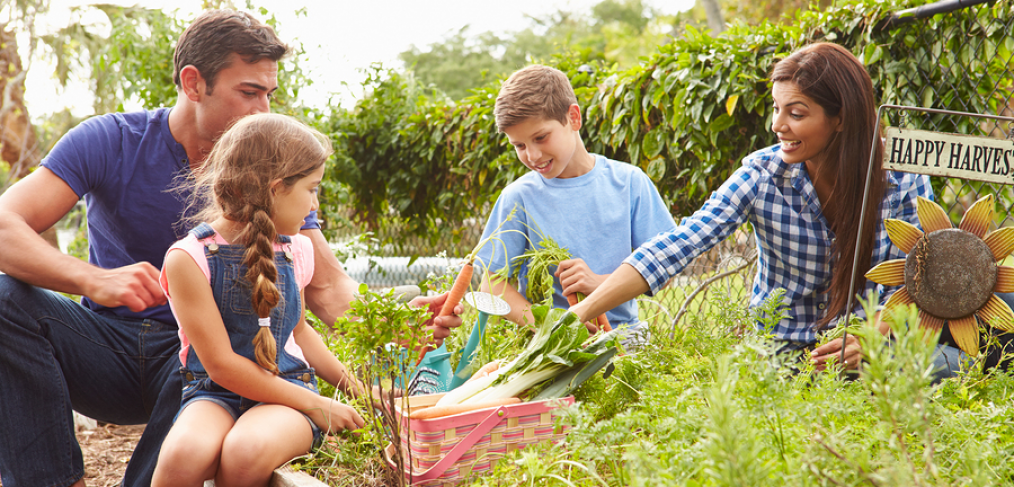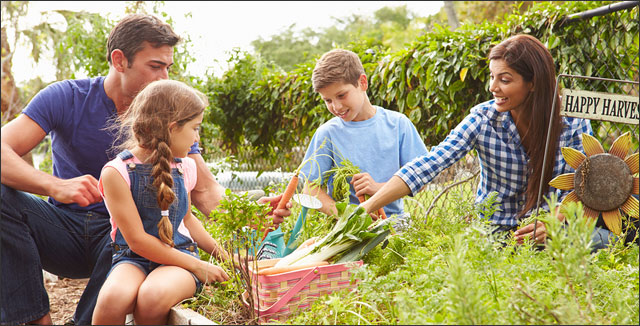
Practical Budget-Friendly Tips to Teach Kids Gardening

There are many benefits to getting your kids, grandkids, or any kids you know to go outside and garden. The younger your kids are when you start, the more chance they have to enjoy gardening all their lives. However, if you have older kids, it’s not too late!
Often, a love of gardening starts with a love of good food or interest in learning how to cook. There are so many books and shows out there about good food.
Take some time to watch or read something with your kids and then talk about how you could incorporate it into your lives together!
In this article, we will cover how to move forward with creating a garden you can practically enjoy with your kids without spending hours and hours or very much money. It can be done!
Teach Kids Gardening – Practical Budget-Friendly Tips
Choose Progress Over Perfection
We all know what it’s like to drool over Pinterest images. If you already love gardening (or if you love pouring over gardening magazines), what you have in your mind’s eye probably feels unattainable and overwhelming.
Of course, we would all love to have a lush and beautifully arranged garden. But when you have small children, you don’t have time also to be a professional gardener.
The point isn’t to make everything look perfect! The point is to share with your kids the experience of tending a living thing from the time it’s a seed or a baby plant until it’s ready to harvest.
Do you need a large garden to achieve this? Do you need your garden to be perfect?
Not at all! If the idea of digging up a garden plot is a deterrent, decide to grow a few useful vegetables in pots on your patio, or build one small raised bed!
Keep saying to yourself that your goal is to get your kids interested and let all the other expectations go.
Did you know that in one square foot of space you can grow one pepper plant, or four heads of lettuce, or sixteen radishes? Think of how much you can grow in just ten square feet!
Select Useful Supplies
You may not need much to garden with your kids, but you do need a few supplies. Raw materials like:
- Pots
- Soil
- Lumber for a raised bed
- Seeds yes
When gardening with kids, there are a few other things I would recommend.
Kid-sized gardening tools – Yes, they make these, and yes, they are worth buying. Nothing is more of a bummer for kids than trying to wrestle a huge spade or shovel that is taller than they are.
You can decide which tools to get and if each child needs one of his or her own. However, the point is that they are much more likely to take ownership of the project if they have tools they can handle. Here are some ideas:
- Garden rakes
- Hoes
- Long-handled digging shovels
- Small trowels
- Small claw tool
You don’t have to get fancy. Empty milk jugs make great watering cans, and old shoes can replace those expensive kids’ gardening clogs in your mind.
It might be fun for each gardener to have his or her wide-brimmed hat and sunglasses just for this project.
Kids will also love using the following inexpensive and easy-to-find essentials to plot out their own garden:
- Tape measures
- Notebooks
- Calendars
- String, and
- Craft sticks
Design a Plot Layout With Kids in Mind
Speaking of plotting out, there are a number of ways to lay out your garden. However, consider the reach of small arms and make sure you don’t make any plants inaccessible for your kids.
The key to success is not just to make planting and harvesting the fun, but to make gardening a daily habit.
Kids should be able to weed and hoe their own plots, as well as check plants for ripening vegetables and fruit without needing help.
You can make a game of learning the sunniest patch of your yard, but a good rule of thumb is that six hours of sunlight shining on your garden per day counts as full sun. Three to six hours of full sun counts as partial sun, and it works for many types of plants.
Plotting your garden together with your kids is where you can have them use their string and tape measures. Have them stand and reach as far as they can and measure. Make sure not to make your beds any wider from the outside to the middle than that measurement.
Make it Fun! Fun & Educational Activities for Your Kids
The fun activities with gardening are endless. Your kids will probably catch your love of it on their own, but here are a few ideas to get you going:
Seed starting
You can use the paper towel method – which is fun because kids can see the sprouts coming out of the germinating seeds day by day. Or you can start many seeds in seed trays by a sunny window or inside under grow lights.
Any method of starting seeds will give you several hours worth of fun, indoor activity with kids while the weather is still cold. And kids will enjoy checking their seedlings every day to see progress.
Soil testing
Once it gets warmer, you can have your kids use the ribbon test to find out what kind of soil you have.
Take a handful of soil and wet it until it’s a good mud pie consistency. Have your kids squeeze it between their fingers, creating a “ribbon” of dirt.
Sandy soil is too gritty to make a ribbon and soil rich in clay will make ribbons of two and a half inches or longer. If you get ribbons that break after about one or two inches, you probably have the perfect mix.
Vinegar and Baking Soda Method to Test pH Balance
Another fun experiment to try is to test your soil’s pH balance with vinegar and baking soda.
You need two paper cups each with a half a cup of soil from your garden, vinegar, and baking soda. Add a tablespoon of water to each cup and stir.
To one cup, add a teaspoon of vinegar and watch for a reaction. If it bubbles, your soil is more alkaline.
In the other cup, add a teaspoon of baking soda, and if it bubbles, your soil is more acidic. If nothing happens, your soil is neutral.
Takeaway
There are so many wonderful things you can do with your kids to get them gardening. Have fun choosing plants, starting your seeds, and laying out your garden. Make it small, make it doable for yourself, and make it fun!
If your only goal is to introduce and teach kids gardening, no victory is too small.



